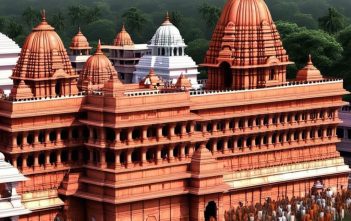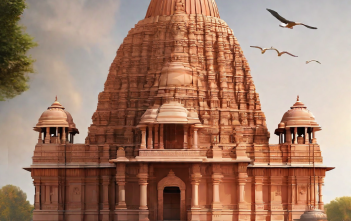Ayodhya Ram Mandir: A Saga of Faith, Dispute, and Inauguration
Ayodhya, a city nestled on the banks of the Sarayu River in Uttar Pradesh, India, holds a unique place in the nation’s heart. It’s not just another ancient city; it’s the cradle of Hinduism, revered as the birthplace of Lord Rama, a central figure in the epic Ramayana. And at the heart of Ayodhya lies the Ram Mandir, a temple steeped in centuries of history, decades of dispute, and now, poised for a grand inauguration.
The Historical Tapestry:
Legend paints Ayodhya as the bustling capital of Kosala Kingdom, ruled by Rama’s father, King Dasharatha. Archaeological excavations hint at a settlement dating back to the 6th century BC, with evidence suggesting the existence of a temple dedicated to Rama. However, the first concrete mention of a Ram Janmabhoomi temple at the disputed site appears in the 16th-century Baburnama, the autobiography of Mughal emperor Babur.
The Seeds of Discord:
In 1527, Babur demolished a temple believed to be at the birthplace of Rama and built the Babri Masjid in its place. Though seemingly inconsequential at the time, this act sowed the seeds of a centuries-long dispute. The simmering tensions erupted in the 19th century, leading to clashes between Hindus and Muslims. The British Raj, sensing political turmoil, intervened and imposed a status quo on the site, barring any religious activity.
The Long Road to Resolution:
The 20th century saw the Ayodhya dispute escalate into a full-blown political movement. Hindu organizations, fueled by religious fervour and nationalist sentiments, demanded the demolition of the Babri Masjid and the construction of a Ram Mandir. The movement culminated in the tragic demolition of the Babri Masjid in 1992, triggering widespread riots and communal violence across India.
The subsequent legal battle stretched over decades, with various petitions and counter-petitions filed before the Allahabad High Court and, eventually, the Supreme Court. In 2019, the Supreme Court delivered a landmark verdict, awarding the disputed land to a trust to construct a Ram Mandir. While hailed by many Hindus, the decision brought mixed reactions from Muslims who expressed disappointment and concern.
The Grand Inauguration:
Fast forward to 2024, and Ayodhya stands on the cusp of a momentous occasion. The construction of the Ram Mandir is nearing completion, and the grand inauguration ceremony is scheduled for January 22nd. The event is expected to be a spectacle of faith and devotion, drawing millions of Hindus from across the country.
A Crossroads of Hope and Concern:
The Ram Mandir’s inauguration holds immense significance for the Hindu community, symbolizing the triumph of faith and the culmination of a decades-long struggle. However, the event also carries the weight of past conflicts and the delicate responsibility of ensuring social harmony. The onus lies on the government and religious leaders to ensure that the ceremony becomes a unifying event, a celebration of faith and inclusivity, rather than a catalyst for further division.
Ayodhya’s story is a complex tapestry woven with threads of faith, history, and political struggle. The Ram Mandir’s inauguration marks a turning point for the disputed site and the nation’s social and religious landscape. Whether it bridges divides or fuels tensions remains to be seen, but one thing is certain: Ayodhya, the city of Lord Rama, will continue to hold a special place in the heart of India, a testament to the enduring power of faith and the hope for a harmonious future.




